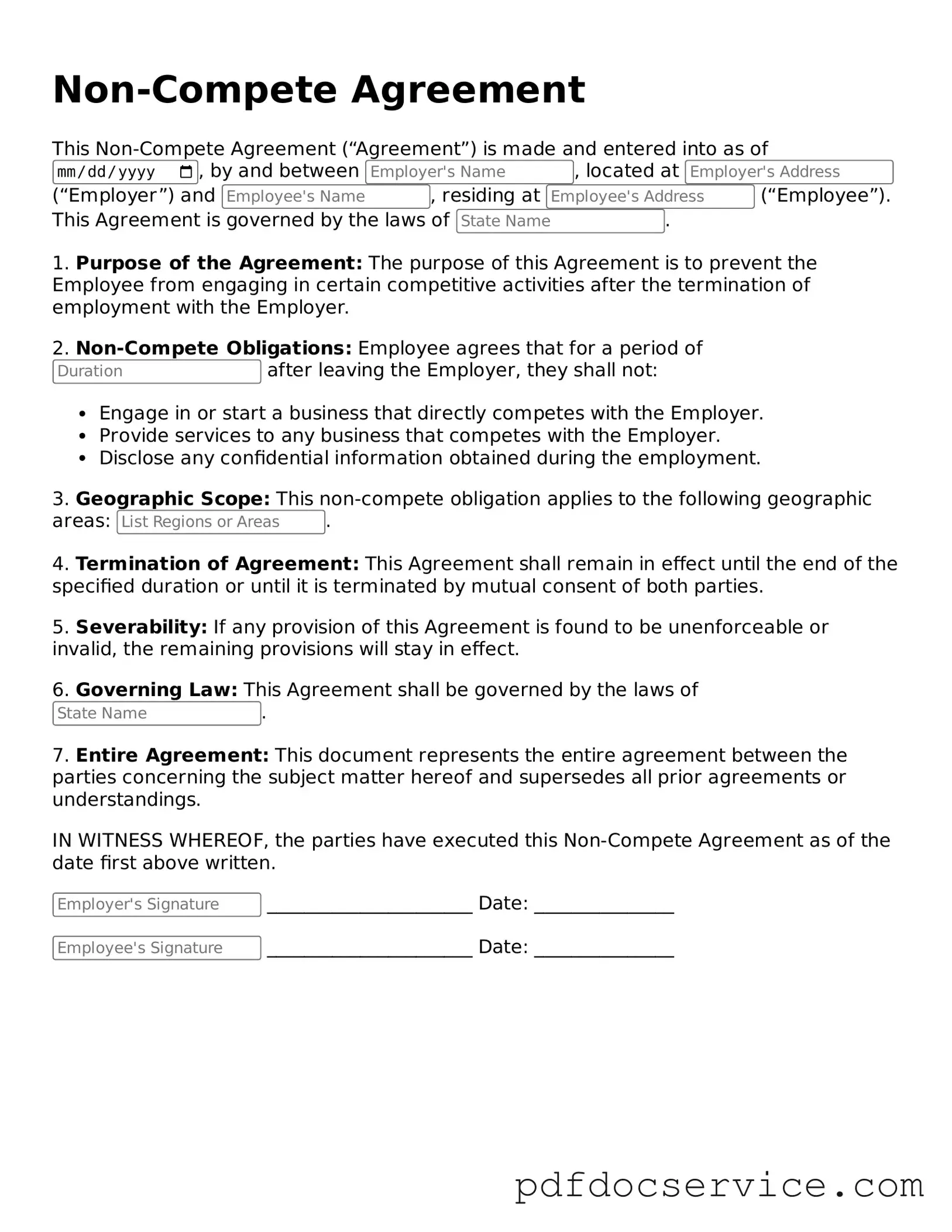What is a Non-compete Agreement?
A Non-compete Agreement is a legal contract between an employer and an employee. It restricts the employee from working for competitors or starting a competing business for a certain period after leaving the company. This agreement aims to protect the employer's business interests, including trade secrets and client relationships.
Why would an employer require a Non-compete Agreement?
Employers often require Non-compete Agreements to safeguard their proprietary information and maintain a competitive edge. By preventing former employees from joining rival firms, businesses can protect their investments in training and development. It also helps in retaining clients and preventing the loss of sensitive information.
Are Non-compete Agreements enforceable in all states?
No, the enforceability of Non-compete Agreements varies by state. Some states, like California, generally do not enforce these agreements, while others may uphold them under specific conditions. Courts typically evaluate factors such as reasonableness in time, geographic scope, and the necessity of protecting legitimate business interests.
What are the typical terms included in a Non-compete Agreement?
Common terms in a Non-compete Agreement include:
-
Duration:
The length of time the agreement is in effect, often ranging from six months to two years.
-
Geographic Scope:
The specific locations where the restrictions apply.
-
Activities Restricted:
The types of work or business activities that the employee is prohibited from engaging in.
-
Consideration:
The benefits provided to the employee in exchange for signing the agreement, such as a job offer or additional compensation.
What happens if I violate a Non-compete Agreement?
If you violate a Non-compete Agreement, your former employer may take legal action against you. This could result in a lawsuit seeking damages or an injunction to prevent you from working in the restricted area. Violating the agreement can also damage your professional reputation and future job prospects.
Can I negotiate the terms of a Non-compete Agreement?
Yes, you can negotiate the terms of a Non-compete Agreement before signing it. It’s important to understand the implications of the agreement fully. Discussing concerns with your employer can lead to more favorable terms, such as a shorter duration or a more limited geographic scope. Always approach negotiations respectfully and with a clear understanding of your needs.
How can I determine if a Non-compete Agreement is reasonable?
To assess the reasonableness of a Non-compete Agreement, consider the following factors:
-
Is the duration of the restriction appropriate for the industry?
-
Does the geographic scope make sense based on the business's market?
-
Are the activities restricted necessary to protect legitimate business interests?
Consulting with a legal professional can provide clarity on whether the terms are reasonable.
What should I do if I’m asked to sign a Non-compete Agreement?
If you’re asked to sign a Non-compete Agreement, take the time to read it carefully. Consider seeking legal advice to understand the implications fully. Ask questions about any unclear terms or conditions. It’s crucial to ensure that you’re comfortable with what you’re agreeing to before signing.
Can I work in my field after leaving a company if I signed a Non-compete Agreement?
Whether you can work in your field after leaving a company depends on the terms of the Non-compete Agreement. If the agreement restricts you from working in a specific role or with certain clients for a designated period, you must adhere to those terms. However, if the agreement is deemed unenforceable, you may be free to pursue opportunities in your field.
